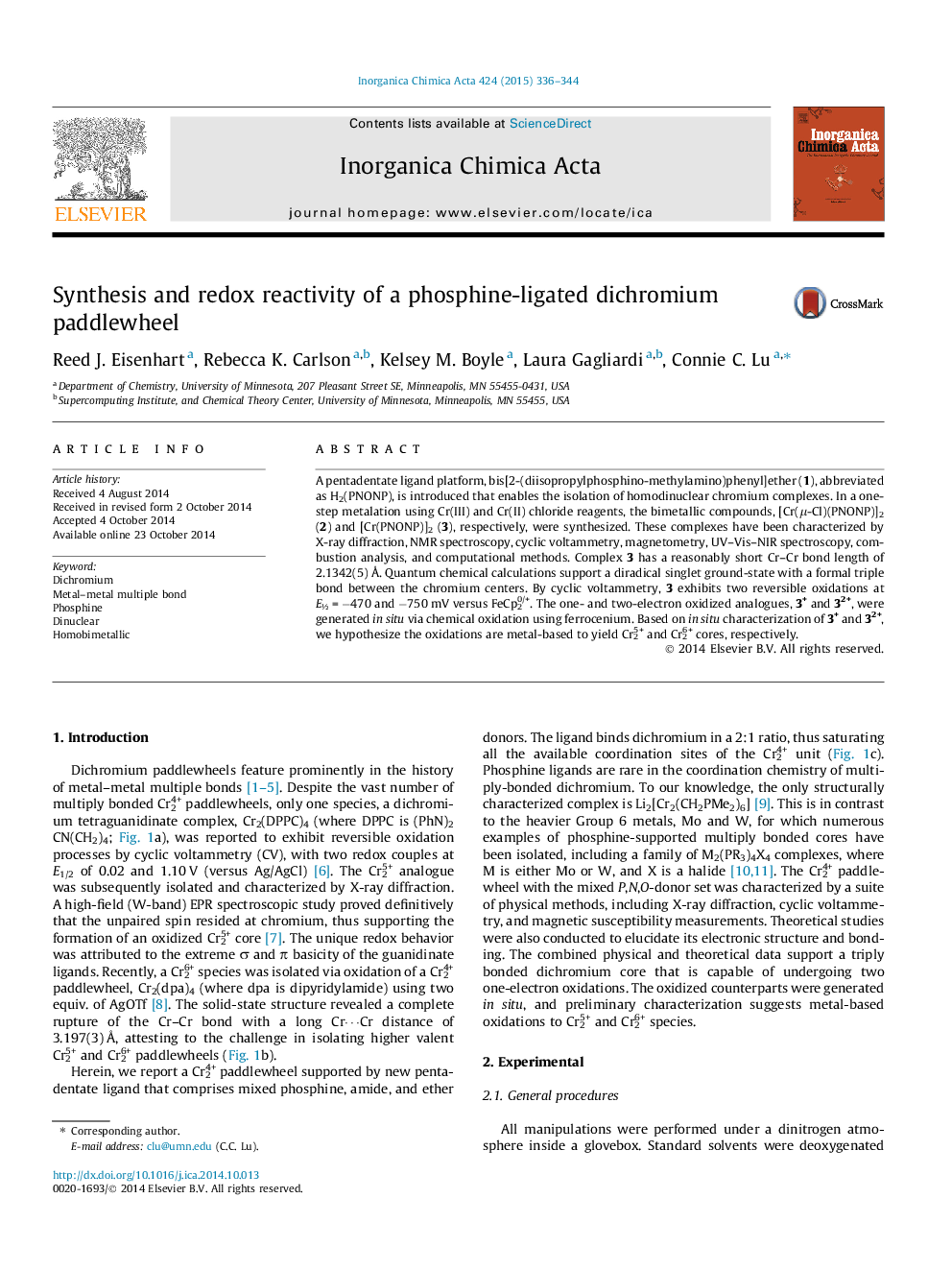| Article ID | Journal | Published Year | Pages | File Type |
|---|---|---|---|---|
| 1312170 | Inorganica Chimica Acta | 2015 | 9 Pages |
•A pentadentate P,N,O-donor ligand is introduced.•Metalation of the ligand with Cr(II) gives a Cr24+ paddlewheel with a CrCr bond.•The Cr24+ paddlewheel exhibits two reversible one-electron oxidations by CV.•We propose an electronic configuration of (π)2(π)2(σ)2(Cr dxy)1(Cr′ dxy)1.
A pentadentate ligand platform, bis[2-(diisopropylphosphino-methylamino)phenyl]ether (1), abbreviated as H2(PNONP), is introduced that enables the isolation of homodinuclear chromium complexes. In a one-step metalation using Cr(III) and Cr(II) chloride reagents, the bimetallic compounds, [Cr(μ-Cl)(PNONP)]2 (2) and [Cr(PNONP)]2 (3), respectively, were synthesized. These complexes have been characterized by X-ray diffraction, NMR spectroscopy, cyclic voltammetry, magnetometry, UV–Vis–NIR spectroscopy, combustion analysis, and computational methods. Complex 3 has a reasonably short Cr–Cr bond length of 2.1342(5) Å. Quantum chemical calculations support a diradical singlet ground-state with a formal triple bond between the chromium centers. By cyclic voltammetry, 3 exhibits two reversible oxidations at E½ = −470 and −750 mV versus FeCp20/+. The one- and two-electron oxidized analogues, 3+ and 32+, were generated in situ via chemical oxidation using ferrocenium. Based on in situ characterization of 3+ and 32+, we hypothesize the oxidations are metal-based to yield Cr25+ and Cr26+ cores, respectively.
Graphical abstractThe Cr24+ paddlewheel complex exhibits unusual electrochemistry, namely two reversible one-electron oxidations.Figure optionsDownload full-size imageDownload as PowerPoint slide
